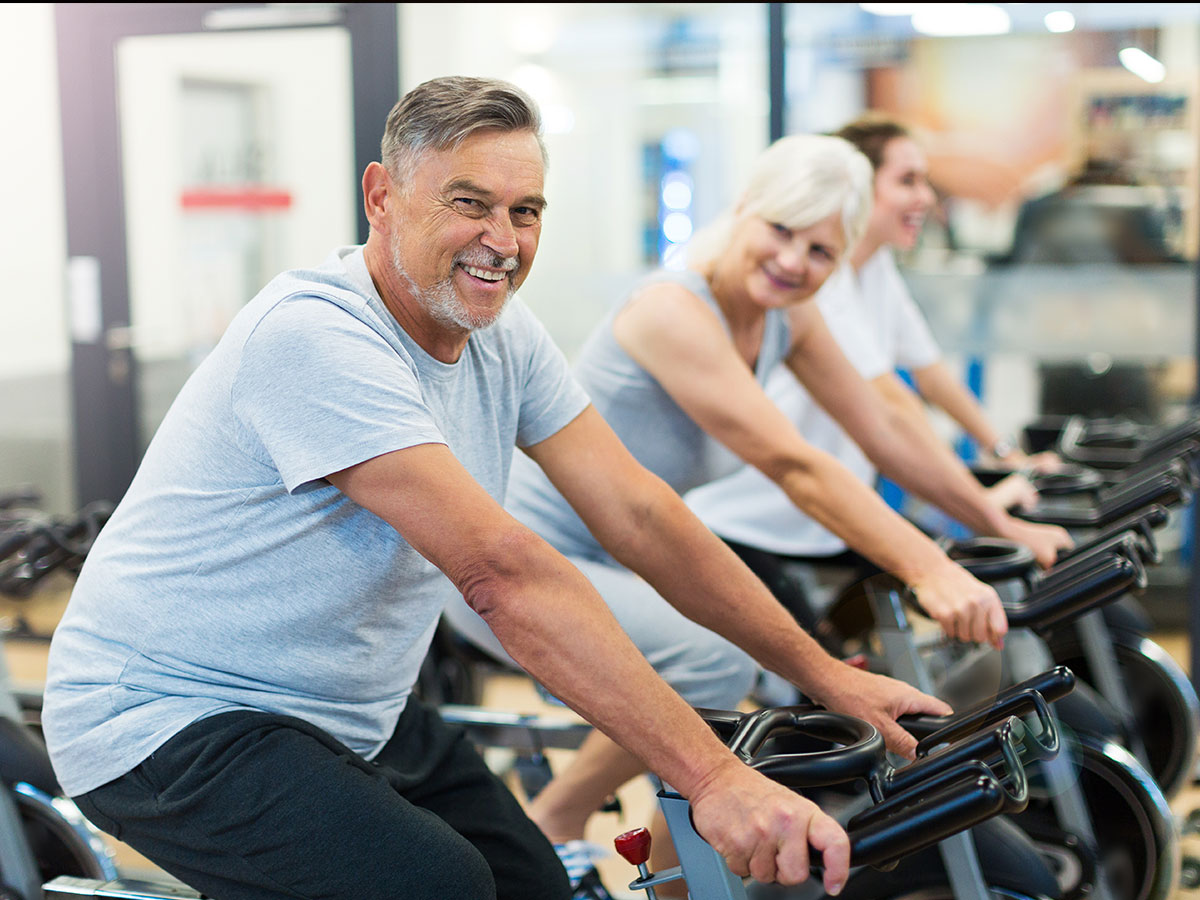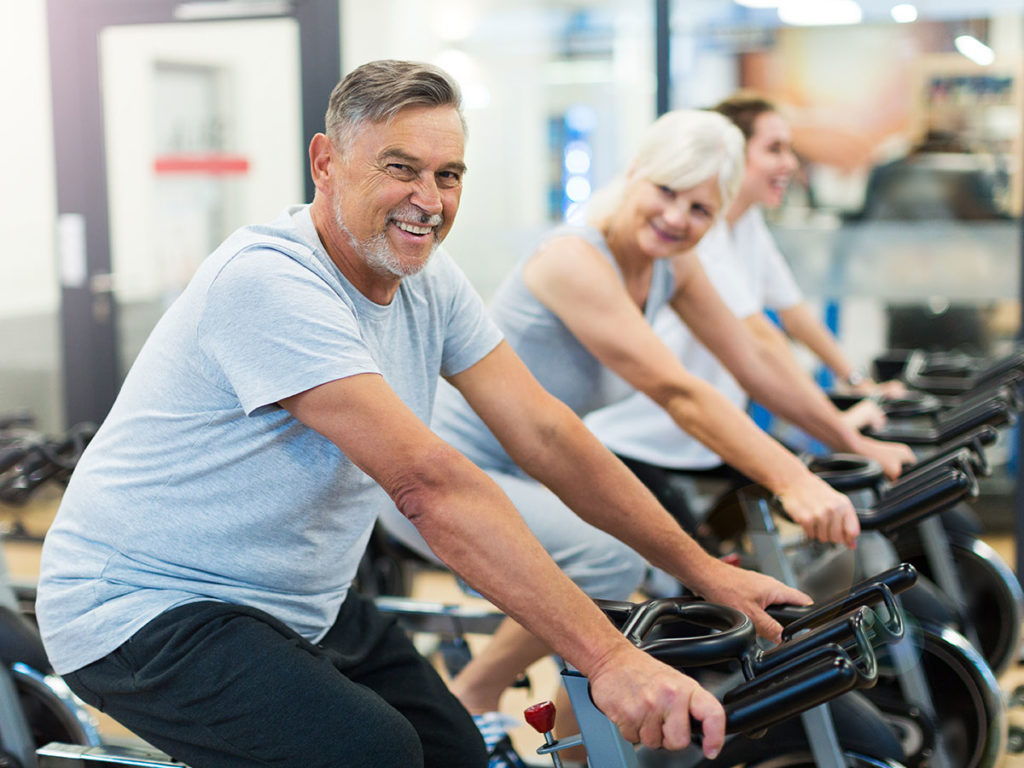

Is arthritis making the daily tasks you never had to think twice about increasingly harder? Whether your knees have started to protest the short stroll down to the local shops, or painlessly moving up the stairs is now a distant memory, you aren’t alone.
Approximately 2.2 million Australians have osteoarthritis, with 12% of women affected and 6.8% of men. Of those who suffer from arthritis, one in five experience high levels of pain and distress, while one in two experience moderate to severe pain.
But pain, as we age, is normal – right? Wrong. If you’ve been accepting osteoarthritic pain as a fact of life, we have great news. There’s a unique, leading exercise and education program designed specifically for people with hip or knee osteoarthritis that offers lasting results. It’s called GLA:D – Good Life with Arthritis: Denmark, and it’s helping to increase mobility and significantly reduce the day-to-day pain experienced by people with osteoarthritis across the world.
Here’s a look into the GLA:D program, how it compares to other management tools for osteoarthritis, what you can expect, and how to get started.
Managing Osteoarthritis: What Are Your Options?
International recommendations for arthritis treatment and management are often divided into three main categories:
- Medications
- Physical therapies – like the GLA:D program
- Surgeries
While medications and surgery are viable options depending on your circumstances, there are several pitfalls that are worthwhile considering. Surgery comes with its own set of risks through the procedure while often having lengthy recovery times. It may also be unsuitable for those with circulatory issues, those that have a high risk of infection, and those that have problems with healing and repair. This is why it is often considered a last resort, and the decision to have surgery must be made carefully.
Medications are widely used, focusing primarily on reducing pain and inflammation. While these can help ease the pain while they’re being taken, they largely mask the symptoms, as opposed to making positive contributions to the health of the joints that can last when the medication has worn off. Any medication taken for prolonged periods also carries with it the risk of negative health impacts.
Perhaps this is why physical therapies which include exercise, weight management and education are a great option,,, with high success rates in helping significantly reduce the pain associated with osteoarthritic joints while greatly improving joint movement and function. This – and more – is exactly what the GLA:D program for hip and knee osteoarthritis offers.
What Can You Expect From GLA:D?
Developed in Denmark, the GLA:D program recognises that while some of the ongoing factors affecting the risk and progression of osteoarthritis are fixed, such as age, gender and genetics, other factors like overload from sport, excess weight and physical inactivity can be addressed – and can make a significant difference on how arthritis affects your life. The GLA:D program utilises the latest evidence in arthritis management, pairing the benefits of physiotherapy treatment and guided exercise with education to help improve your mobility, pain levels, confidence on your feet and your quality of life.
Based on research and evidence, the GLA:D program combines both standardised and proven principles with individualised elements based on your physio assessment. The program runs over a three-month period, with a baseline assessment with your physio, twelve neuromuscular exercise therapy sessions, two education sessions and follow-ups at 3 and 12 months. The severity of your arthritis does not influence your ability to participate in the program.
Beyond being shown to reduce pain and improve a person’s mobility, GLA:D also helps participants feel confident and comfortable to increase their physical activity levels and reduce their sickness absence and use of pain medication. The 2020 annual report found that 70% of GLA:D participants showed significant improvements in their function, over 50% experiencing a meaningful change in their quality of life, and 83% of participants reported the program to be of great benefit to them.
Some of the evidence-informed treatments as part of GLA:D may include:
- Advice and education on osteoarthritis and how to modify lifestyle factors, physical activity, and weight management if appropriate
- Strategies for pain relief
- The potential use of braces, orthoses, walking aids
- Mobilisation or manual therapies
- Targeted exercise programs
Simply put: GLA:D aims to significantly improve your day-to-day comfort, giving you greater freedoms and helping restore lost movement. The focus on education helps you make the best decisions to help your results last, with patients who have previously completed the program reporting sustained benefits exceeding one year after completing the program.
Ready To Move And Feel Better?
Allsports Physiotherapy is proud to have GLA:D trained physios offering the program at our Indooroopilly, Camp Hill, Annerley, The Gap, Kangaroo Point, Parkwood and Phyxme clinics. To find out more about GLA:D and get started, Book your appointment with your local Allsports physio team online or call a clinic near you.
References
[2] Arthritis
[3] OARSI recommendations for the management of hip and knee osteoarthritis
[4] Arthritis Pain Relief: Risks and Benefits
[5] Osteoarthritis and Cartilage
[6] EULAR recommendations for the non-pharmacological core management of hip and knee osteoarthritis
[7] A systematic review of recommendations and guidelines for the management of osteoarthritis
[8] GLA:D to have a high-value option for patients with knee and hip arthritis across four continents
